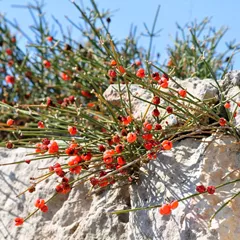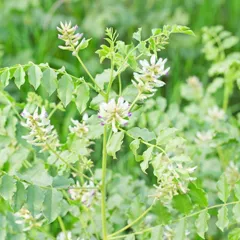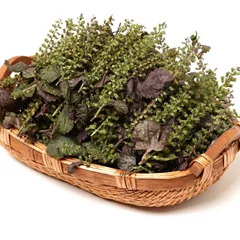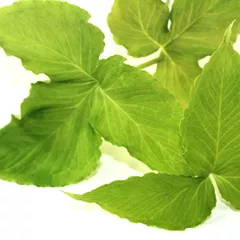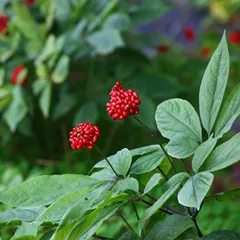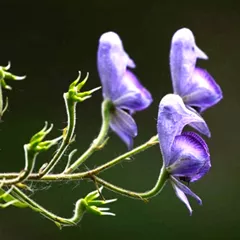Bronchial asthma according to Chinese Medicine
The information provided here is not a replacement for a doctor. You shouldn't use it for the purpose of self-diagnosing or self-medicating but rather so you can have a more informed discussion with a professional TCM practitioner.
Bronchial asthma factsheet
Possible causes and remedies:
Phlegm clogging the Lungs with Qi Stagnation
Symptoms: Poor appetite Digestive difficulties Focal distention of the chest and one other symptom
Recommended formula: San Zi Yang Qin Tang
Lung Qi Deficiency and Liver Qi Stagnation
Symptoms: Coughing Dizziness Headaches and four other symptoms
Recommended formula: Xiao Chai Hu Tang
In Chinese Medicine, bronchial asthma can be associated with six so-called "patterns of disharmony". Chinese Medicine sees the body as a system, not a sum of isolated parts. A "pattern" is when the system's harmony is disrupted. It is not equivalent to the Western concept of "disease", as a matter of fact here bronchial asthma can be caused by six different patterns.
To understand whether someone's bronchial asthma might be caused by a given pattern, one needs to look for signs and symptoms associated with the pattern beyond what one might typically experience from bronchial asthma alone. For instance when bronchial asthma is caused by the pattern Phlegm clogging the Lungs with Qi Stagnation, patients also experience symptoms such as coughing and wheezing with copious sputum, focal distention of the chest, poor appetite and digestive difficulties. Similarly, patients with Phlegm clogging the Lungs with Qi Stagnation typically exhibit slippery (Hua) pulses as well as a tongue with thick white coating.
We've listed below a description of the six patterns associated with bronchial asthma so that you can start to get an understanding of the various possibilities according to Chinese Medicine.
Once identified, patterns are often treated using herbal formulas. Drinking herbal infusions is the most common remedy in Chinese Medicine, together with acupuncture. Here we detail below twelve formulas that can help treat the various patterns associated with bronchial asthma, depending on which pattern fits your profile.
The six "patterns of disharmony" associated with bronchial asthma
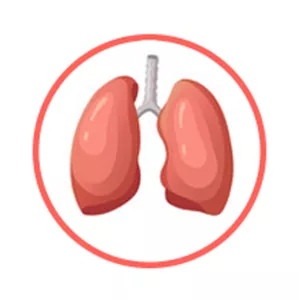
The Lungs is a so-called "Zang" Organ. Learn more about the Lungs in Chinese Medicine
Phlegm clogging the Lungs with Qi Stagnation
Pulse type(s): Slippery (Hua)
Tongue coating: Thick white coating
Recommended herbal formula: San Zi Yang Qin Tang
Symptoms: Poor appetite Digestive difficulties Focal distention of the chest Coughing and wheezing with copious sputum
Bronchial asthma might be due to Phlegm clogging the Lungs with Qi Stagnation if the condition is paired with typical pattern symptoms such as coughing and wheezing with copious sputum, focal distention of the chest, poor appetite and digestive difficulties. Similarly, patients with Phlegm clogging the Lungs with Qi Stagnation typically exhibit slippery (Hua) pulses as well as a tongue with thick white coating.
Read more about Phlegm clogging the Lungs with Qi Stagnation here
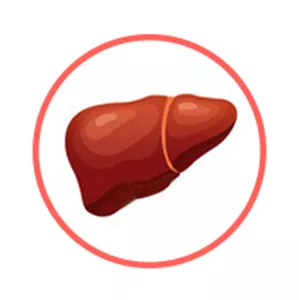
The Liver is a so-called "Zang" Organ. Learn more about the Liver in Chinese Medicine
Lung Qi Deficiency and Liver Qi Stagnation
Pulse type(s): Empty (Xu), Tight (Jin)
Tongue coating: Thin white coating
Tongue color: Normal (light red), Pale
Recommended herbal formula: Xiao Chai Hu Tang
Symptoms: Coughing Dizziness Headaches Depression Moving pain Listlessness Hypochondrium fullness
Bronchial asthma might be due to Lung Qi Deficiency and Liver Qi Stagnation if the condition is paired with typical pattern symptoms such as coughing, hypochondrium fullness, dizziness and headaches. Similarly, patients with Lung Qi Deficiency and Liver Qi Stagnation typically exhibit empty (Xu) or tight (Jin) pulses as well as a normal (light red), pale tongue with thin white coating.
Read more about Lung Qi Deficiency and Liver Qi Stagnation here
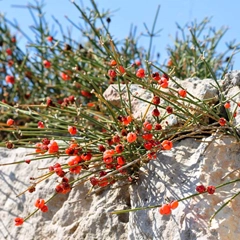
Ephedra (Ma Huang) is the key herb for Da Qing Long Tang, a formula used for Exterior Cold invading with Interior Heat from Stagnation
Exterior Cold invading with Interior Heat from Stagnation
Pulse type(s): Floating (Fu), Tight (Jin)
Recommended herbal formula: Da Qing Long Tang
Symptoms: Thirst Irritability Generalized body pain Severe fever and chills without sweating
Bronchial asthma might be due to Exterior Cold invading with Interior Heat from Stagnation if the condition is paired with typical pattern symptoms such as severe fever and chills without sweating, generalized body pain, thirst and irritability. Similarly, patients with Exterior Cold invading with Interior Heat from Stagnation typically exhibit floating (Fu) or tight (Jin) pulses.
Read more about Exterior Cold invading with Interior Heat from Stagnation here

Ephedra (Ma Huang) is the key herb for Da Qing Long Tang, a formula used for Phlegm-Fluids in the limbs
Phlegm-Fluids in the limbs
Pulse type(s): Tight (Jin), Wiry (Xian)
Tongue coating: Sticky coating, Thick white coating
Tongue shape: Swollen
Recommended herbal formula: Da Qing Long Tang
Symptoms: Thirst Irritability Absence of sweating Feeling of heaviness Generalized body pain Alternating fever and chills Superficial edema in the extremities
Bronchial asthma might be due to Phlegm-Fluids in the limbs if the condition is paired with typical pattern symptoms such as feeling of heaviness, generalized body pain, superficial edema in the extremities and alternating fever and chills. Similarly, patients with Phlegm-Fluids in the limbs typically exhibit tight (Jin) or wiry (Xian) pulses as well as a tongue with sticky coating, thick white coating.

Ephedra (Ma Huang) is the key herb for Xiao Qing Long Tang, a formula used for Phlegm-Fluids above the diaphragm
Phlegm-Fluids above the diaphragm
Pulse type(s): Floating (Fu), Tight (Jin)
Tongue coating: Thick white coating
Tongue shape: Swollen
Recommended herbal formula: Xiao Qing Long Tang
Symptoms: Wheezing No thirst Absence of sweating Generalized body pain Alternating fever and chills General sensation of heaviness Stifling sensation in the chest Coughing of copious thin and white sputum
Bronchial asthma might be due to Phlegm-Fluids above the diaphragm if the condition is paired with typical pattern symptoms such as alternating fever and chills, absence of sweating, wheezing and stifling sensation in the chest. Similarly, patients with Phlegm-Fluids above the diaphragm typically exhibit floating (Fu) or tight (Jin) pulses as well as a tongue with thick white coating.

The Kidneys is a so-called "Zang" Organ. Learn more about the Kidneys in Chinese Medicine
Kidney Yang Deficiency
Pulse type(s): Empty (Xu), Weak (Ruo)
Tongue coating: Thin white coating
Tongue color: Pale
Tongue shape: Swollen
Recommended herbal formula: Shen Qi Wan
Symptoms: Incontinence Lower back pain Urinary difficulty Lower abdominal pressure Weakness of the lower extremities Cold sensation in the lower half of the body
Bronchial asthma might be due to Kidney Yang Deficiency if the condition is paired with typical pattern symptoms such as lower back pain, weakness of the lower extremities, cold sensation in the lower half of the body and lower abdominal pressure. Similarly, patients with Kidney Yang Deficiency typically exhibit empty (Xu) or weak (Ruo) pulses as well as a pale tongue with thin white coating.
The twelve herbal formulas that might help with bronchial asthma
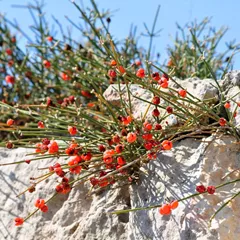
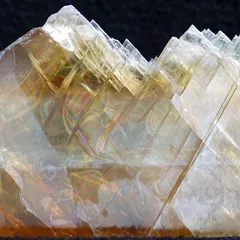
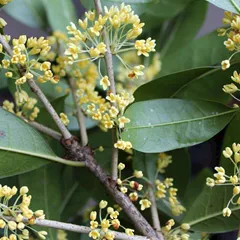
The top herbs in Da Qing Long Tang are Ephedra (Ma Huang), Gypsum (Shi Gao) and Cinnamon Twigs (Gui Zhi)
Da Qing Long Tang
Source date: 220 AD
Number of ingredients: 7 herbs
Key actions: Promotes sweating. Releases the Exterior. Clears Interior Heat.
Why might Da Qing Long Tang help with bronchial asthma?
Because it is a formula often recommended to help with the patterns Exterior Cold invading with Interior Heat from Stagnation and Phlegm-Fluids in the limbs which are sometimes associated with bronchial asthma. If any of these patterns look like something you might suffer from, this formula might help (although please seek confirmation with a professional practitioner beforehand).
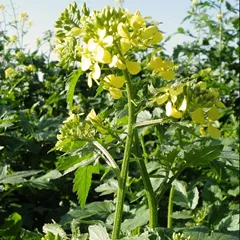
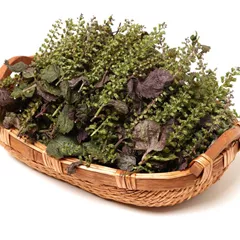

The top herbs in San Zi Yang Qin Tang are White Mustard Seeds (Bai Jie Zi), Perilla Seeds (Zi Su Zi) and Radish Seeds (Lai Fu Zi)
San Zi Yang Qin Tang
Source date: 1856 AD
Number of ingredients: 3 herbs
Key actions: Directs the Qi downward. Transforms Phlegm. Reduces harbored food.
Why might San Zi Yang Qin Tang help with bronchial asthma?
Because it is a formula often recommended to help treat Phlegm clogging the Lungs with Qi Stagnation, a pattern sometimes associated with bronchial asthma. If it looks like you might suffer from Phlegm clogging the Lungs with Qi Stagnation, this formula might help (although please seek confirmation with a professional practitioner beforehand).
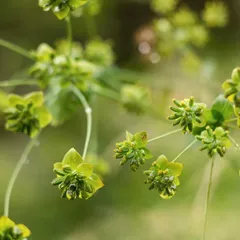

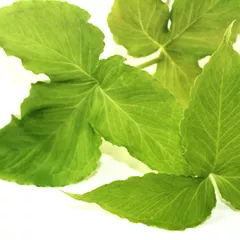
The top herbs in Xiao Chai Hu Tang are Bupleurum Roots (Chai Hu), Baikal Skullcap Roots (Huang Qin) and Crow-Dipper Rhizomes (Ban Xia)
Xiao Chai Hu Tang
Source date: 220 AD
Number of ingredients: 7 herbs
Key actions: Treats the Lesser Yang Channels (Gallbladder and Triple Warmer). Regulates the Liver and Spleen functions. Addresses combined Yin-Yang symptoms of External and Internal, Excess and Deficiency, and Hot and Cold.
Why might Xiao Chai Hu Tang help with bronchial asthma?
Because it is a formula often recommended to help treat Lung Qi Deficiency and Liver Qi Stagnation, a pattern sometimes associated with bronchial asthma. If it looks like you might suffer from Lung Qi Deficiency and Liver Qi Stagnation, this formula might help (although please seek confirmation with a professional practitioner beforehand).


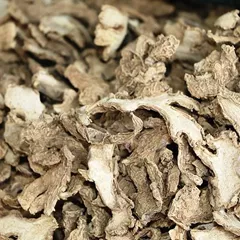
The top herbs in Xiao Qing Long Tang are Ephedra (Ma Huang), Cinnamon Twigs (Gui Zhi) and Dried Ginger (Gan Jiang)
Xiao Qing Long Tang
Source date: 220 AD
Number of ingredients: 8 herbs
Key actions: Releases the Exterior. Transforms Phlegm-Fluids. Warms the Lungs. Directs Rebellious Qi downward.
Why might Xiao Qing Long Tang help with bronchial asthma?
Because it is a formula often recommended to help treat Phlegm-Fluids above the diaphragm, a pattern sometimes associated with bronchial asthma. If it looks like you might suffer from Phlegm-Fluids above the diaphragm, this formula might help (although please seek confirmation with a professional practitioner beforehand).
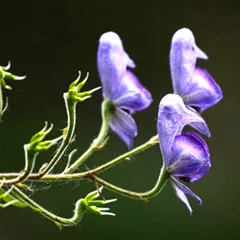


The top herbs in Shen Qi Wan are Prepared Aconite (Zhi Fu Zi), Cinnamon Twigs (Gui Zhi) and Prepared Rehmannia (Shu Di huang)
Shen Qi Wan
Why might Shen Qi Wan help with bronchial asthma?
Because it is a formula often recommended to help treat Kidney Yang Deficiency, a pattern sometimes associated with bronchial asthma. If it looks like you might suffer from Kidney Yang Deficiency, this formula might help (although please seek confirmation with a professional practitioner beforehand).
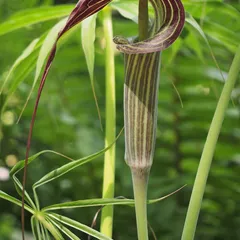
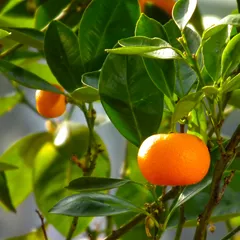

The top herbs in Di Tan Tang are Arisaema (Tian Nan Xing), Red Tangerine Peel (Ju Hong) and Crow-Dipper Rhizomes (Ban Xia)
Di Tan Tang
Source date: 1470 AD
Number of ingredients: 9 herbs
Key actions: Removes Phlegm. Opens the sensory orifices. Tonifies Qi.
Why might Di Tan Tang help with bronchial asthma?
Because it is a formula often recommended to help treat , a pattern sometimes associated with bronchial asthma. If it looks like you might suffer from , this formula might help (although please seek confirmation with a professional practitioner beforehand).
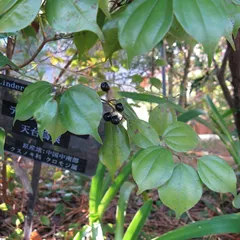
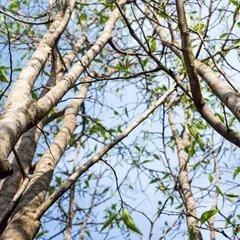

The top herbs in Si Mo Tang are Lindera Roots (Wu Yao), Agarwood (Chen Xiang) and Ginseng (Ren Shen)
Si Mo Tang
Source date: 1253 AD
Number of ingredients: 4 herbs
Key actions: Promotes the movement of Qi. Directs rebellious Qi downward. Expands the chest and dissipates clumping.
Why might Si Mo Tang help with bronchial asthma?
Because it is a formula often recommended to help treat , a pattern sometimes associated with bronchial asthma. If it looks like you might suffer from , this formula might help (although please seek confirmation with a professional practitioner beforehand).


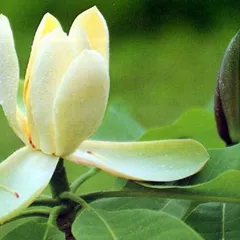
The top herbs in Su Zi Jiang Qi Tang are Perilla Seeds (Zi Su Zi), Crow-Dipper Rhizomes (Ban Xia) and Houpu Magnolia Bark (Hou Pu)
Su Zi Jiang Qi Tang
Source date: 650 AD
Number of ingredients: 8 herbs
Key actions: Directs rebellious Qi downward. Arrests wheezing. Stops coughing. Warms and transforms Phlegm-Cold.
Why might Su Zi Jiang Qi Tang help with bronchial asthma?
Because it is a formula often recommended to help treat , a pattern sometimes associated with bronchial asthma. If it looks like you might suffer from , this formula might help (although please seek confirmation with a professional practitioner beforehand).


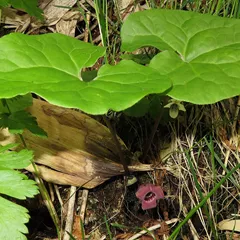
The top herbs in Ma Huang Xi Xin Fu Zi Tang are Ephedra (Ma Huang), Prepared Aconite (Zhi Fu Zi) and Wild Ginger (Xi Xin)
Ma Huang Xi Xin Fu Zi Tang
Source date: 220 AD
Number of ingredients: 3 herbs
Key actions: Tonifes the Yang. Releases the Exterior.
Why might Ma Huang Xi Xin Fu Zi Tang help with bronchial asthma?
Because it is a formula often recommended to help treat , a pattern sometimes associated with bronchial asthma. If it looks like you might suffer from , this formula might help (although please seek confirmation with a professional practitioner beforehand).
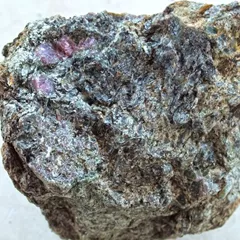
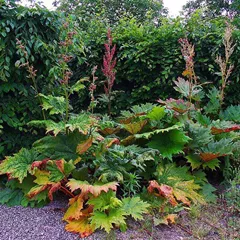

The top herbs in Gun Tan Wan are Chlorite Schist (Meng Shi), Rhubarb (Da Huang) and Baikal Skullcap Roots (Huang Qin)
Gun Tan Wan
Why might Gun Tan Wan help with bronchial asthma?
Because it is a formula often recommended to help treat , a pattern sometimes associated with bronchial asthma. If it looks like you might suffer from , this formula might help (although please seek confirmation with a professional practitioner beforehand).



The top herbs in Ren Shen Ge Jie San are Tokay Geckos (Ge Jie), Ginseng (Ren Shen) and Poria-Cocos Mushrooms (Fu Ling)
Ren Shen Ge Jie San
Source date: 1047 AD
Number of ingredients: 8 herbs
Key actions: Tonifies the Qi. Augments the Kidneys. Stops coughing. Arrests wheezing.
Why might Ren Shen Ge Jie San help with bronchial asthma?
Because it is a formula often recommended to help treat , a pattern sometimes associated with bronchial asthma. If it looks like you might suffer from , this formula might help (although please seek confirmation with a professional practitioner beforehand).
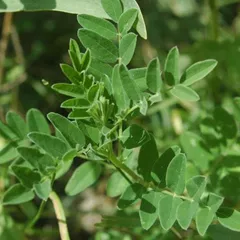

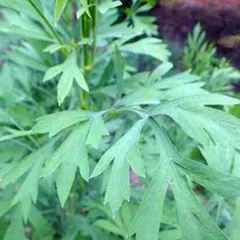
The top herbs in Yu Ping Feng San are Milkvetch Roots (Huang Qi), Atractylodes Rhizomes (Bai Zhu) and Saposhnikovia Roots (Fang Feng)
Yu Ping Feng San
Source date: 1213 AD
Number of ingredients: 3 herbs
Key actions: Augments the Qi. Stabilizes the Exterior. Stops sweating .
Why might Yu Ping Feng San help with bronchial asthma?
Because it is a formula often recommended to help treat , a pattern sometimes associated with bronchial asthma. If it looks like you might suffer from , this formula might help (although please seek confirmation with a professional practitioner beforehand).

